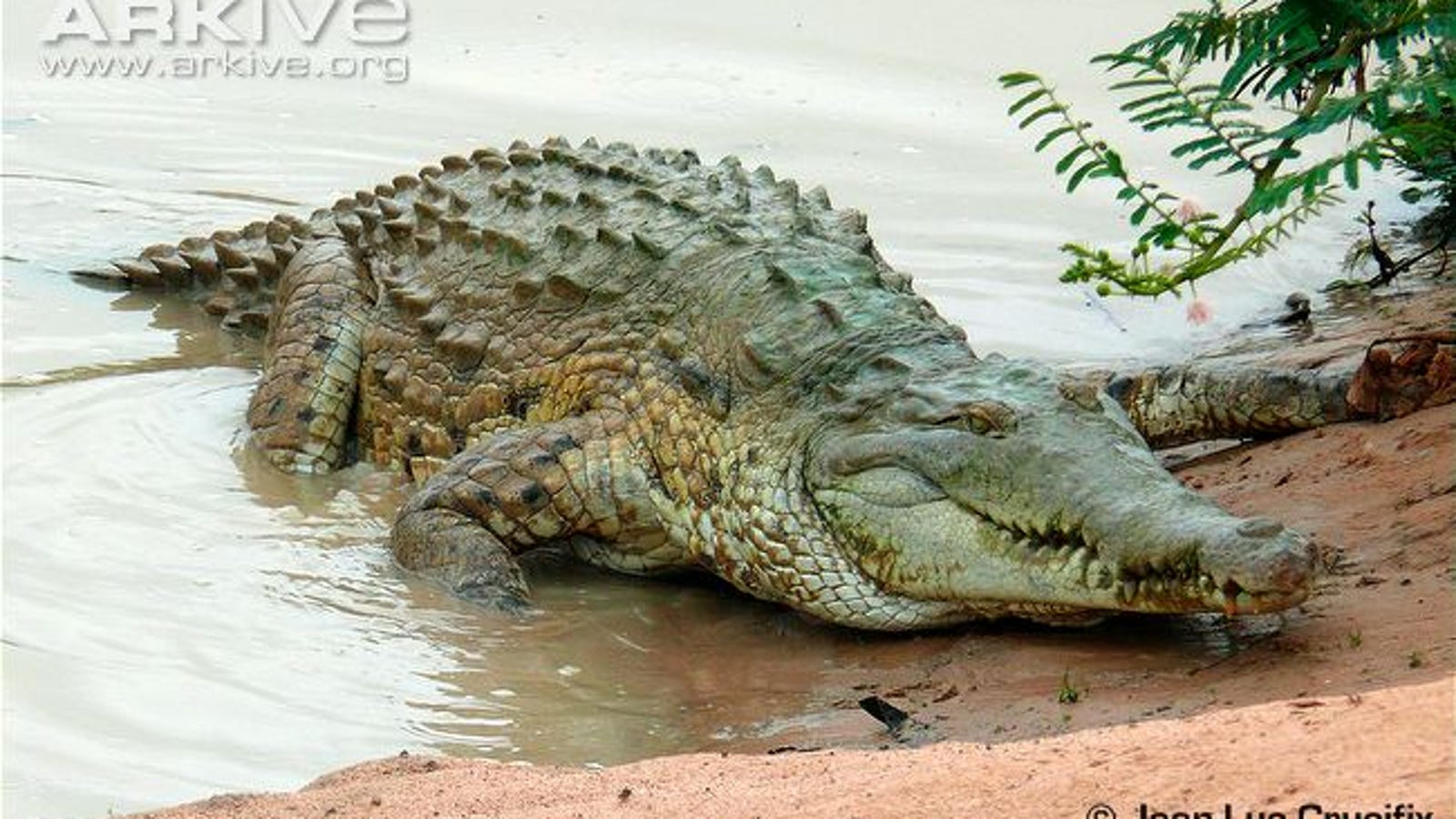Post by dinosauria101 on Oct 22, 2019 18:18:37 GMT 5
Orinoco Crocodile - Crocodylus intermedius
The Orinoco crocodile, (Crocodylus intermedius), is a critically endangered crocodile found in freshwater in northern South America, in particular the Orinoco River. Typical measurements for adults are 4.1 to 5.2 meters (13.4 to 17 feet) in males and 3.5 meters (11 feet) in females. Typical weight for males is 380-635 kg (838-1400 lbs), with a mean of about 507 kg (1,115 lbs), and a mean of about 225 kg (495 lbs) for females. The largest specimen reported was shot in 1800 and allegedly measured 6.8 m (22.6 ft). It is arguably the largest crocodilian in the Americas, although American Crocodiles approach similar dimensions. The Orinoco crocodile can be recognised by its relatively long snout and its yellowish hide with dark brown bands. Like all crocodilians, the majority of the Orinoco crocodile's diet consists of fish, but it is arguably the apex predator of its habitat as virtually any animal living within its range could be considered a potential meal, such as reptiles, birds, and mammals. Despite having a rather elongated skull, its base snout is wide, hinting to a generalist diet. It stalks both aquatic and terrestrial prey.

i.kinja-img.com/gawker-media/image/upload/s--BL2qf0yV--/c_fill,fl_progressive,g_center,h_900,q_80,w_1600/falelaljqxii580o88wy.jpg
Tiger Shark - Galeocerdo cuvier
The tiger shark (Galeocerdo cuvier) is a species of requiem shark and the only extant member of the genus Galeocerdo. It is a large macropredator, capable of attaining a length over 5 m (16 ft 5 in). Populations are found in many tropical and temperate waters, especially around central Pacific islands. Its name derives from the dark stripes down its body, which resemble a tiger's pattern, but fade as the shark matures. The tiger shark is a solitary, mostly nocturnal hunter. It is notable for having the widest food spectrum of all sharks, with a range of prey that includes crustaceans, fish, seals, birds, squid, turtles, sea snakes, dolphins, and even other smaller sharks. It also has a reputation as a "garbage eater", consuming a variety of inedible, man-made objects that linger in its stomach. Though apex predators, tiger sharks are sometimes taken by groups of killer whales. It is considered a near threatened species due to finning and fishing by humans. The tiger shark commonly attains a length of 3.25–4.25 m (10 ft 8 in–13 ft 11 in) and weighs around 385–635 kg (849–1,400 lb). It is dimorphic, with exceptionally large females reportedly measuring over 5 m (16 ft 5 in), and the largest males 4 m (13 ft 1 in). Weights of particularly large female tiger sharks can exceed 900 kg (2,000 lb).

Credit to Wikipedia
NOTE: I know we already have American crocodile vs tiger shark and saltwater crocodile vs tiger shark, but since the shark is favored in the former and the crocodile is favored in the latter, maybe this could be closer to 50/50
The Orinoco crocodile, (Crocodylus intermedius), is a critically endangered crocodile found in freshwater in northern South America, in particular the Orinoco River. Typical measurements for adults are 4.1 to 5.2 meters (13.4 to 17 feet) in males and 3.5 meters (11 feet) in females. Typical weight for males is 380-635 kg (838-1400 lbs), with a mean of about 507 kg (1,115 lbs), and a mean of about 225 kg (495 lbs) for females. The largest specimen reported was shot in 1800 and allegedly measured 6.8 m (22.6 ft). It is arguably the largest crocodilian in the Americas, although American Crocodiles approach similar dimensions. The Orinoco crocodile can be recognised by its relatively long snout and its yellowish hide with dark brown bands. Like all crocodilians, the majority of the Orinoco crocodile's diet consists of fish, but it is arguably the apex predator of its habitat as virtually any animal living within its range could be considered a potential meal, such as reptiles, birds, and mammals. Despite having a rather elongated skull, its base snout is wide, hinting to a generalist diet. It stalks both aquatic and terrestrial prey.

i.kinja-img.com/gawker-media/image/upload/s--BL2qf0yV--/c_fill,fl_progressive,g_center,h_900,q_80,w_1600/falelaljqxii580o88wy.jpg
Tiger Shark - Galeocerdo cuvier
The tiger shark (Galeocerdo cuvier) is a species of requiem shark and the only extant member of the genus Galeocerdo. It is a large macropredator, capable of attaining a length over 5 m (16 ft 5 in). Populations are found in many tropical and temperate waters, especially around central Pacific islands. Its name derives from the dark stripes down its body, which resemble a tiger's pattern, but fade as the shark matures. The tiger shark is a solitary, mostly nocturnal hunter. It is notable for having the widest food spectrum of all sharks, with a range of prey that includes crustaceans, fish, seals, birds, squid, turtles, sea snakes, dolphins, and even other smaller sharks. It also has a reputation as a "garbage eater", consuming a variety of inedible, man-made objects that linger in its stomach. Though apex predators, tiger sharks are sometimes taken by groups of killer whales. It is considered a near threatened species due to finning and fishing by humans. The tiger shark commonly attains a length of 3.25–4.25 m (10 ft 8 in–13 ft 11 in) and weighs around 385–635 kg (849–1,400 lb). It is dimorphic, with exceptionally large females reportedly measuring over 5 m (16 ft 5 in), and the largest males 4 m (13 ft 1 in). Weights of particularly large female tiger sharks can exceed 900 kg (2,000 lb).

Credit to Wikipedia
NOTE: I know we already have American crocodile vs tiger shark and saltwater crocodile vs tiger shark, but since the shark is favored in the former and the crocodile is favored in the latter, maybe this could be closer to 50/50


